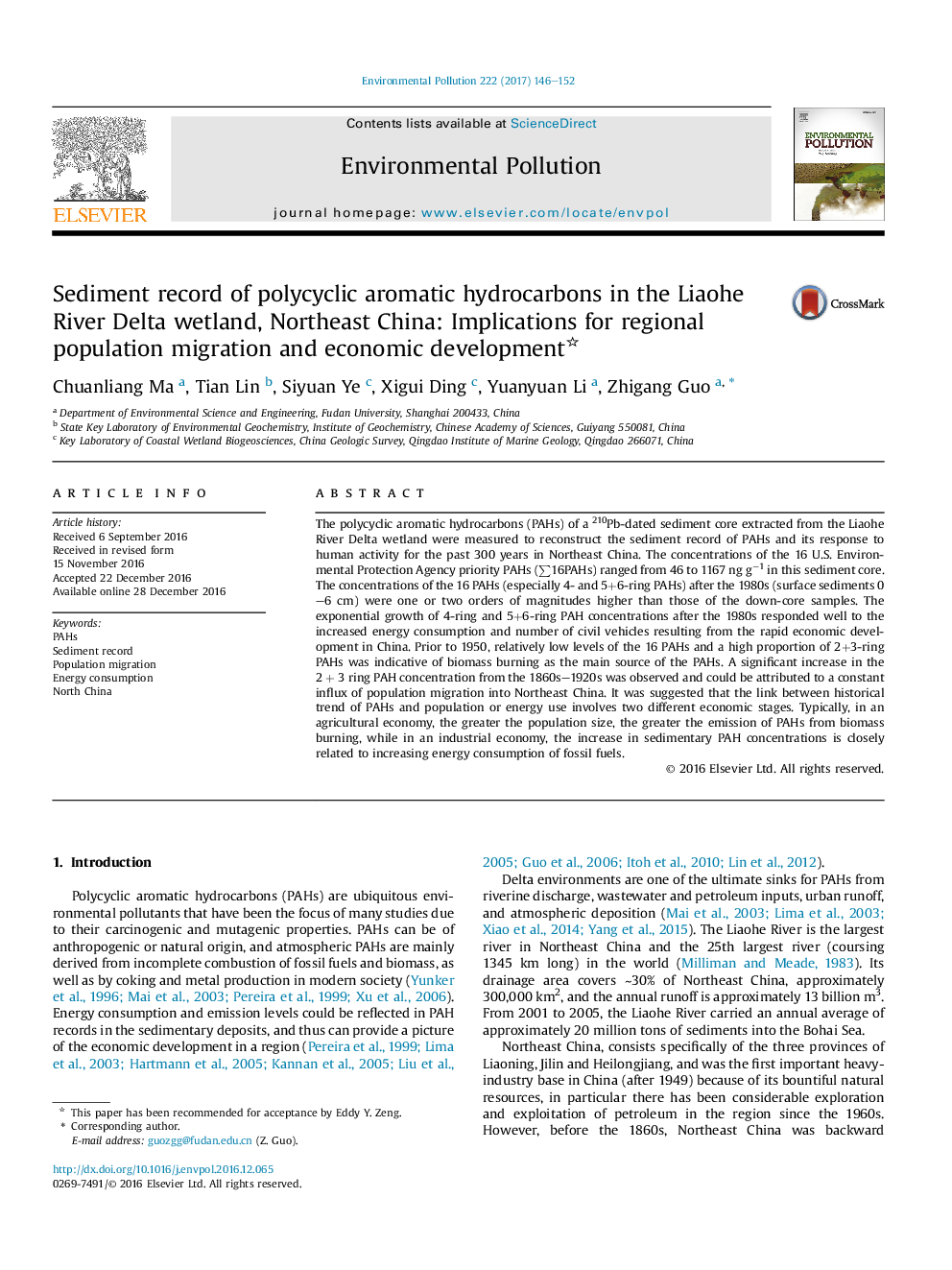| Article ID | Journal | Published Year | Pages | File Type |
|---|---|---|---|---|
| 5749005 | Environmental Pollution | 2017 | 7 Pages |
â¢A 300 year record of PAHs in a delta wetland of Northeast China was established.â¢Time trend of PAHs corresponded to the regional social-economic development.â¢Relation of population size with LMW PAH in agricultural economy was revealed.
The polycyclic aromatic hydrocarbons (PAHs) of a 210Pb-dated sediment core extracted from the Liaohe River Delta wetland were measured to reconstruct the sediment record of PAHs and its response to human activity for the past 300 years in Northeast China. The concentrations of the 16 U.S. Environmental Protection Agency priority PAHs (â16PAHs) ranged from 46 to 1167 ng gâ1 in this sediment core. The concentrations of the 16 PAHs (especially 4- and 5+6-ring PAHs) after the 1980s (surface sediments 0-6 cm) were one or two orders of magnitudes higher than those of the down-core samples. The exponential growth of 4-ring and 5+6-ring PAH concentrations after the 1980s responded well to the increased energy consumption and number of civil vehicles resulting from the rapid economic development in China. Prior to 1950, relatively low levels of the 16 PAHs and a high proportion of 2+3-ring PAHs was indicative of biomass burning as the main source of the PAHs. A significant increase in the 2 + 3 ring PAH concentration from the 1860s-1920s was observed and could be attributed to a constant influx of population migration into Northeast China. It was suggested that the link between historical trend of PAHs and population or energy use involves two different economic stages. Typically, in an agricultural economy, the greater the population size, the greater the emission of PAHs from biomass burning, while in an industrial economy, the increase in sedimentary PAH concentrations is closely related to increasing energy consumption of fossil fuels.
Graphical abstractDownload high-res image (420KB)Download full-size image
